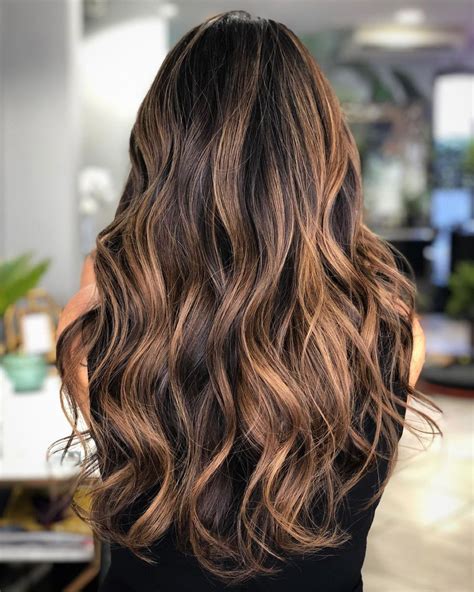Learn how to understand and balance your hair’s porosity levels with tips for low and high porosity hair. Determine your porosity and improve your hair care routine.
Understanding Hair Porosity
Contents
Hair porosity refers to the hair’s ability to absorb and retain moisture. Understanding your hair’s porosity level is crucial for caring for and maintaining healthy, vibrant hair. There are three main categories of hair porosity: low, normal, and high. Low porosity hair has a tightly bound cuticle layer, making it difficult for moisture to penetrate. Normal porosity hair has a balanced level of moisture retention, while high porosity hair has gaps and holes in the cuticle, causing it to absorb moisture quickly but lose it just as fast.
Determining your hair porosity level can be done through a simple test. Take a few strands of clean hair and place them in a bowl of water. If the hair floats, it has low porosity. If it sinks to the bottom, it has high porosity. If it stays in the middle, it has normal porosity. Once you understand your hair’s porosity level, you can tailor your hair care routine to address its specific needs.
For low porosity hair, it’s essential to use lightweight, liquid-based products that won’t build up on the hair. Products with humectants like glycerin and honey can help attract and retain moisture. Heat styling and incorporating steam treatments can also help open the hair cuticle and allow for better product absorption.
On the other hand, high porosity hair benefits from heavier, creamy products to help seal and protect the hair shaft. Ingredients like shea butter and jojoba oil can provide much-needed moisture and help minimize frizz. Using leave-in conditioners and natural oils can also help reduce moisture loss and improve the overall health of the hair.
Understanding and addressing hair porosity is essential for maintaining healthy, lustrous locks. By tailoring your hair care routine to your specific porosity level, you can ensure that your hair is getting the moisture and nourishment it needs to thrive.
Determining Your Hair Porosity
Understanding your hair porosity is key to having healthy and well-maintained hair. Determining your hair porosity can help you choose the right products and treatments that work best for your hair type. There are a few simple tests you can do at home to figure out whether your hair has low, normal, or high porosity.
If you suspect your hair may have low porosity, one way to confirm this is by doing the water test. Take a clean strand of hair and place it in a bowl of water. If it sits on top of the water for an extended period of time before eventually sinking, then your hair has low porosity.
On the other hand, if your hair quickly sinks to the bottom of the bowl, you likely have high porosity. This means that your hair cuticle is more open, allowing moisture to enter easily but also escape quickly. You can also look out for other signs of high porosity such as tangles, frizz, and split ends.
For those with normal porosity hair, your hair will float in the middle of the water, indicating that it absorbs and retains moisture at a balanced rate. This is the most ideal hair type, allowing you to maintain moisture without it quickly escaping or taking too long to absorb.
Tips for Low Porosity Hair
Understanding the characteristics of low porosity hair is essential for determining the best care practices. Low porosity hair has tightly bound cuticles, which makes it difficult for moisture to penetrate the hair shaft. This often leads to product buildup and difficulty in keeping the hair hydrated.
To effectively care for low porosity hair, it’s important to use gentle, moisturizing products that won’t weigh the hair down. Look for lightweight leave-in conditioners and hair oils, as heavy products can exacerbate product buildup.
When washing low porosity hair, using warm water can help the cuticles to slightly open, allowing for better product penetration. Additionally, using a clarifying shampoo on occasion can help to remove any stubborn buildup.
Deep conditioning treatments are crucial for low porosity hair. Look for heat-activated deep conditioners, or consider using a hair steamer to help open up the hair cuticles and allow for better absorption of the product.
Finally, when styling low porosity hair, it’s best to use humectant products that can draw moisture from the air into the hair shaft. Avoiding heavy butters and oils will help to prevent buildup and keep the hair looking and feeling moisturized.
Tips for High Porosity Hair
High porosity hair can be a challenge for many people as it tends to absorb and lose moisture quickly. This can lead to dry, frizzy, and brittle hair. To combat these issues, there are several tips that can help maintain moisture and improve the overall health of high porosity hair.
First, using a deep conditioning treatment on a regular basis can work wonders for high porosity hair. Look for a rich, creamy conditioner with moisturizing ingredients such as shea butter, coconut oil, or argan oil. These ingredients can help to seal in moisture and repair the hair cuticle.
Another tip for high porosity hair is to avoid using heat styling tools frequently. Excessive heat can further damage the hair and lead to increased porosity. Instead, try to let your hair air dry whenever possible and use heat protectant products when heat styling is necessary.
In addition, using a leave-in conditioner can be beneficial for high porosity hair. This type of conditioner can provide an extra layer of moisture and protection for the hair, helping to prevent excessive moisture loss throughout the day.
Lastly, incorporating a protein treatment into your hair care routine can help strengthen and fortify high porosity hair. Protein treatments can help fill in gaps in the hair cuticle, reducing porosity and improving the overall integrity of the hair.
Balancing Hair Porosity Levels
Hair porosity is the ability of your hair to absorb and retain moisture. It is an important factor in determining the products and treatments that are best for your hair. Balancing hair porosity levels is essential for maintaining healthy, lustrous hair.
One of the main challenges of balancing hair porosity levels is managing low porosity hair. This type of hair has a hard time absorbing moisture, so using heavy products can lead to buildup and greasy hair. To combat this, it’s important to use lightweight, water-based products that can penetrate the hair shaft.
For those with high porosity hair, the focus is on preventing moisture loss. This can be achieved by using rich, emollient products that help seal the hair cuticle and prevent moisture from escaping. Deep conditioning treatments and hair masks are also beneficial in maintaining moisture levels.
Regular trims are essential for balancing hair porosity levels. Trimming off split ends and damaged hair helps prevent further moisture loss and breakage, keeping your hair healthy and strong. Additionally, protective styles such as braids and twists can help minimize exposure to environmental factors that can impact hair porosity.
Creating a hair care routine tailored to your specific hair porosity can help you achieve balanced levels. By understanding and addressing your hair’s unique needs, you can have healthy, beautiful hair that looks and feels its best.











